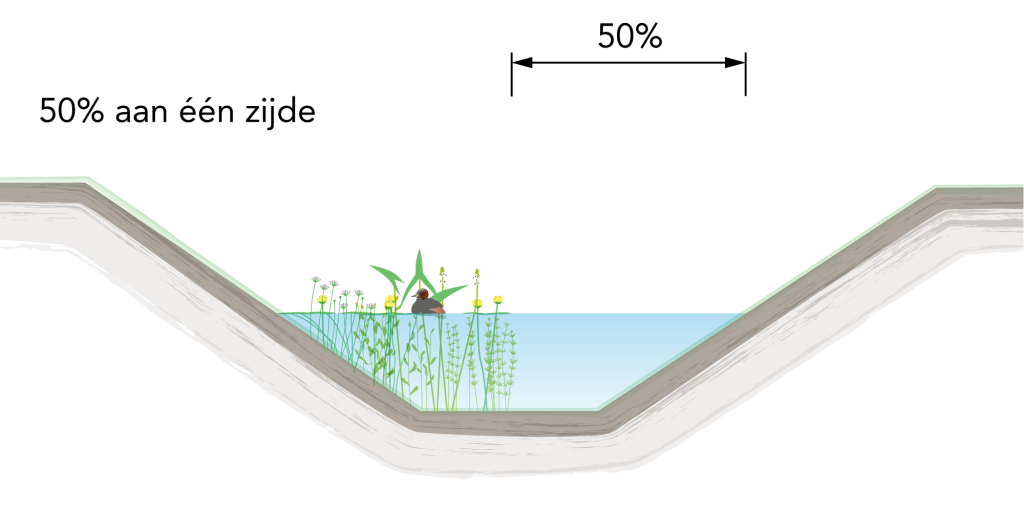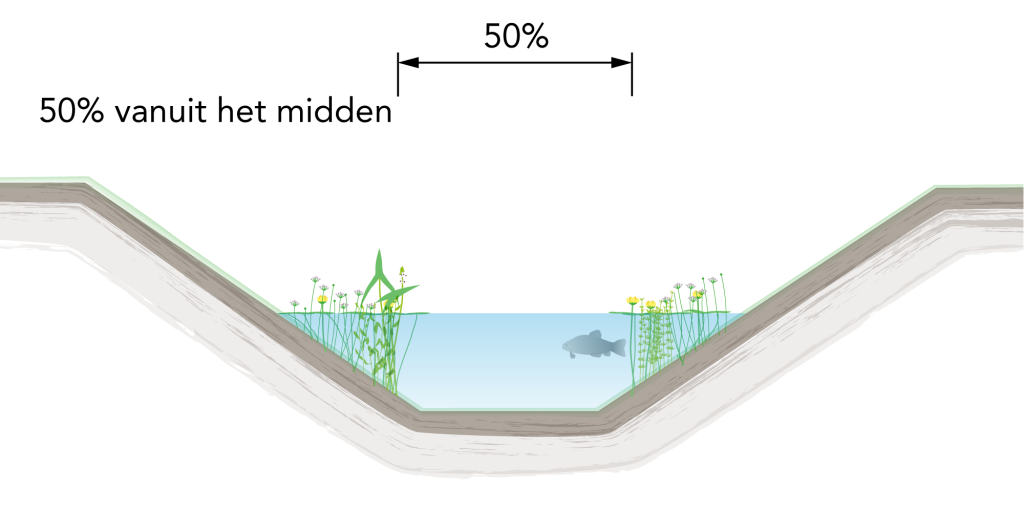Autumn Watch
Give water space, check your ditch!
The autumn inspection is the biggest inspection of the year. From the third Monday in October we check whether the ditches in Hollands Noorderkwartier are sufficiently maintained. A ditch must be free of (water) plants and debris that can impede the flow of water. It is important that the supply, drainage and storage of water is well regulated within our area. This way we prevent flooding, or water shortage.
Do you own a plot along a ditch?
If so, you are at least responsible for the maintenance of the side of the ditch, and in many cases for the maintenance of the ditch itself. You can check that in the register map Waters, about which more is explained below. In fact, you should maintain the ditch and ditch side throughout the year, but keep in mind the nature legislation (see frequently asked questions). By the third Monday in October at the latest, the ditch must be in order. On that day our inspectors go out and start the autumn inspection. If you cannot or do not want to do the maintenance yourself, you can hire an agricultural contractor or gardener.
Register map Waters
The register map Waters is an online Map of the water system, describing each ditch or canal, storage area and associated structures such as culverts, bridges and baffles. You can see the minimum dimensions at which everything must be maintained, whether you have a maintenance obligation and how much vegetation you are allowed to leave.
What is the chimney master looking at?
- Whether the ditch is free of debris;
- Whether reeds and aquatic plants do not impede the ditch's water supply and drainage;
- Whether the walkways are in good condition;
- Whether the shoring is well maintained;
- Whether the structures such as culverts, bridges and baffles are clean and in good condition. The owner of the structure is responsible for maintaining the ditch up to 3 meters on either side of the structure. Also on the side of the public road;
- Whether trees and plants are pruned above the water surface, at least to 3 meters above the waterline.
Learn more about ditch maintenance
More room for growth
It is important that the supply and drainage of water is well regulated. We also consider biodiversity very important. Therefore, all ditches are calculated to see how much vegetation is allowed to remain to ensure proper supply and drainage. You can see for yourself whether there is room for growth in your ditch in the Waters register map .
What may remain?
Go to the Watersregister map , there you can enter your address and view the maintenance rules. Follow these steps:
- Select the "by maximum vegetation level" tab.
- Click on the magnifying glass in the upper right corner.
- Enter your address.
- Click on the blue line on the Map, which shows the ditch along your plot.
- A window opens, scroll all the way down to see how much overgrowth is allowed to remain; the overgrowth rate.
More information on vegetation cover
Suppose you are allowed to leave 50%. Then you can do that in several ways, as you can see in the drawings below.


Has your ditch not been maintained?
If the ditch is inadequately maintained, you will receive an intention for administrative enforcement. You then have two weeks to put the ditch in order. From that date the inspectors will check again. If the ditch still does not comply, the area manager will contact you for a final deadline. If it is still not done after this deadline, HHNK will have the work done at your expense. Additional costs will be charged.
Learn more
Check the frequently asked questions below to see if your question is answered there. You can also contact. The chimney team can be reached every weekday at 072-582 8282, or via the contact form.